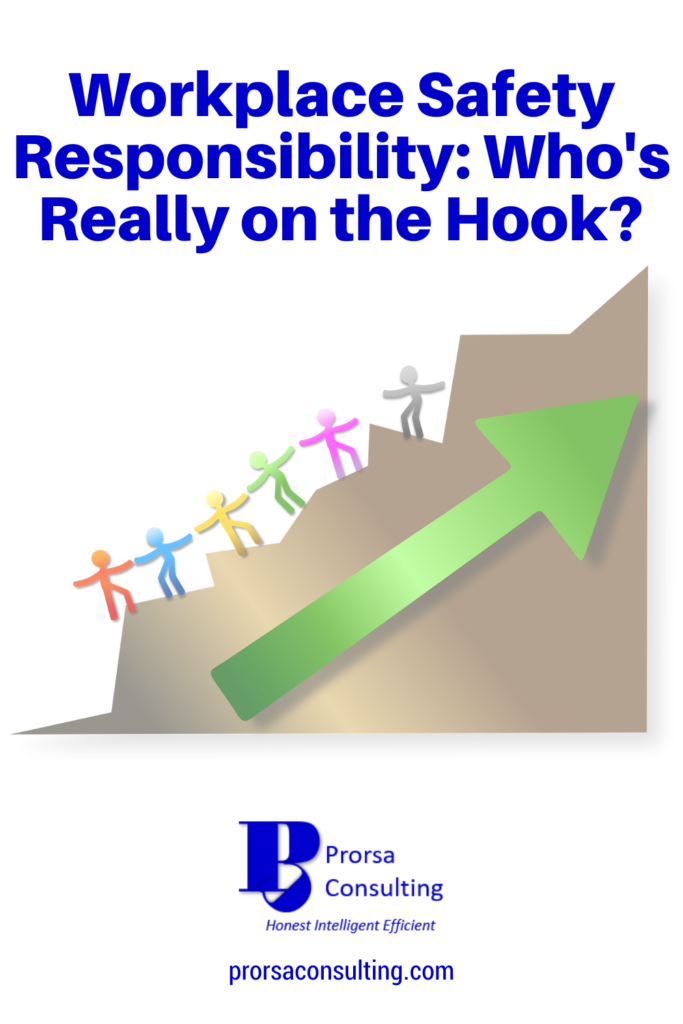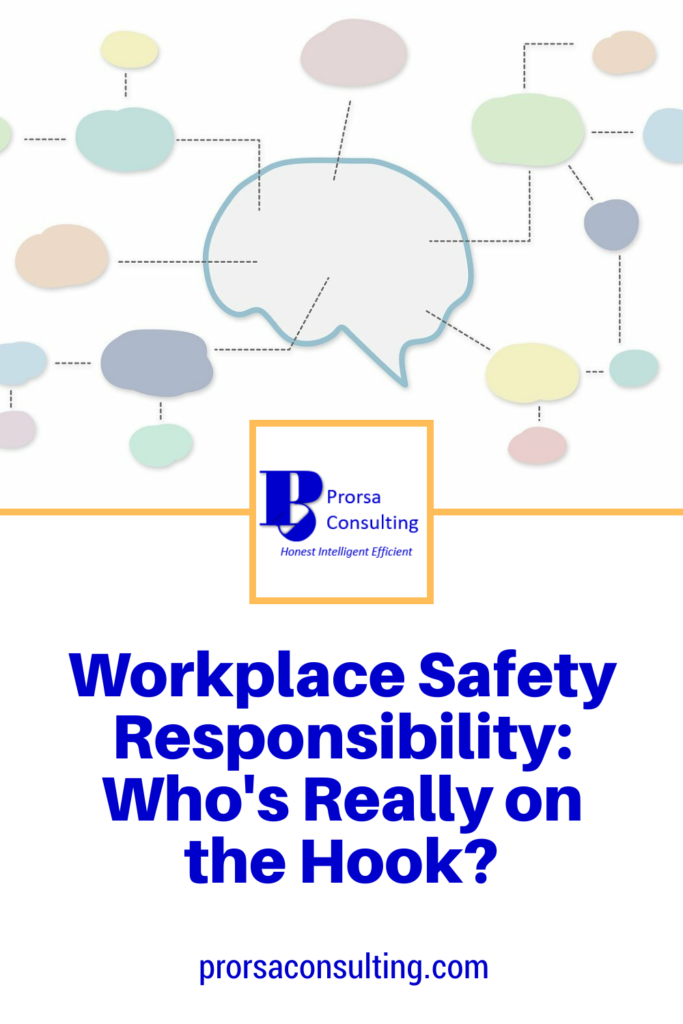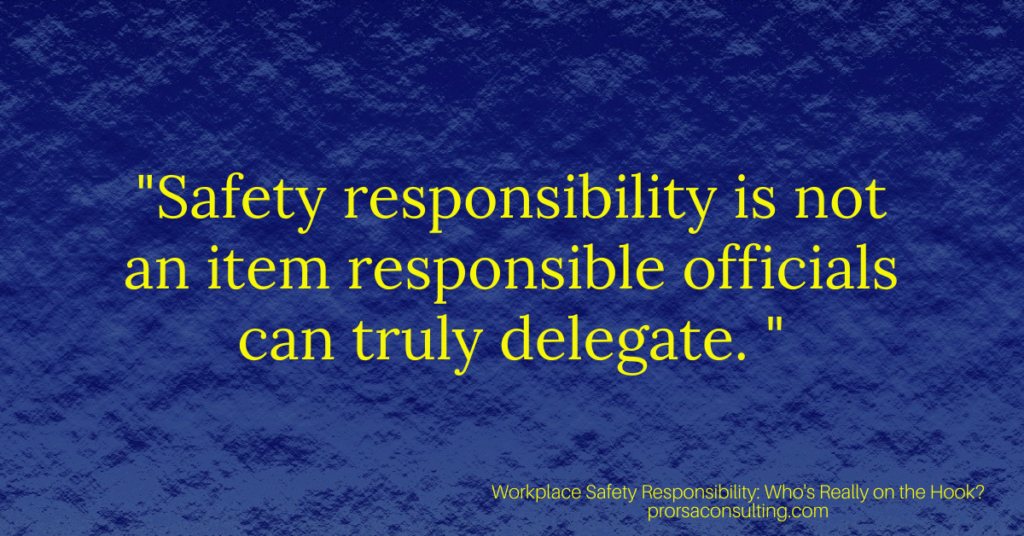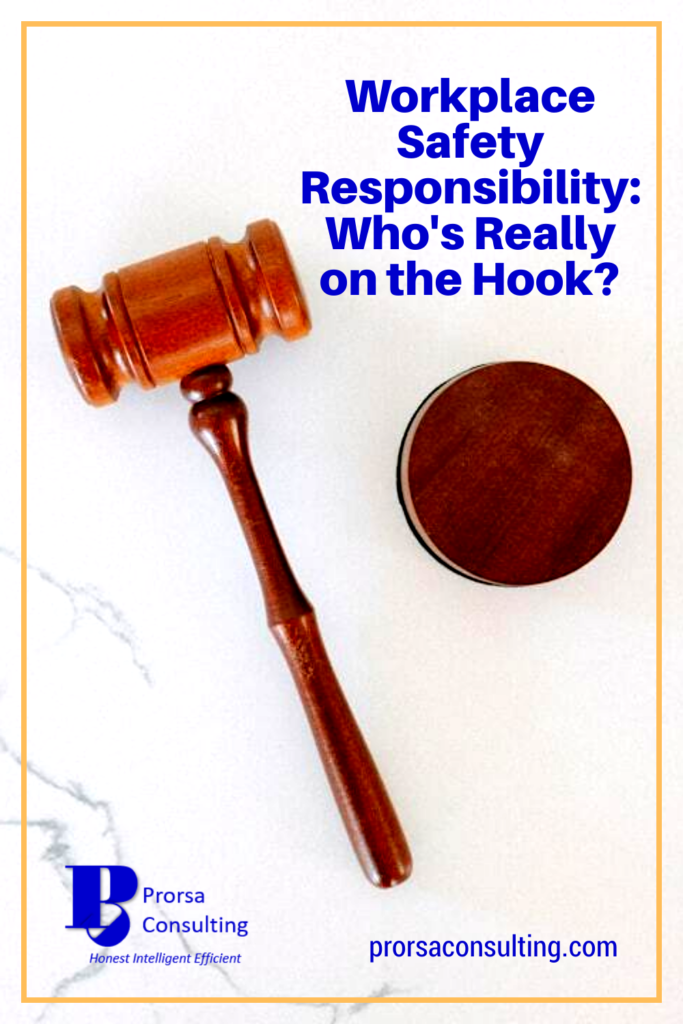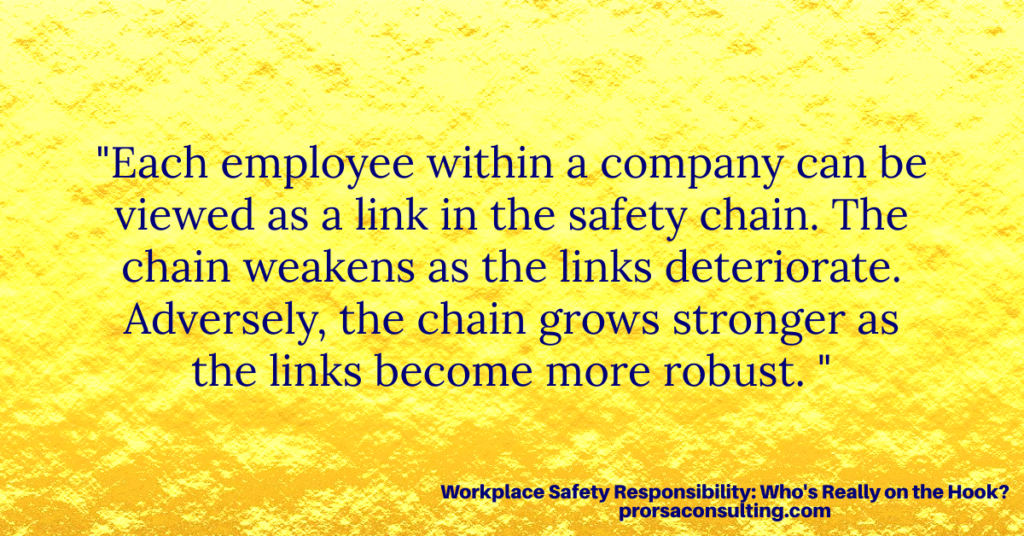Workplace Safety Responsibility: Who’s Really on the Hook?
By : Admin -
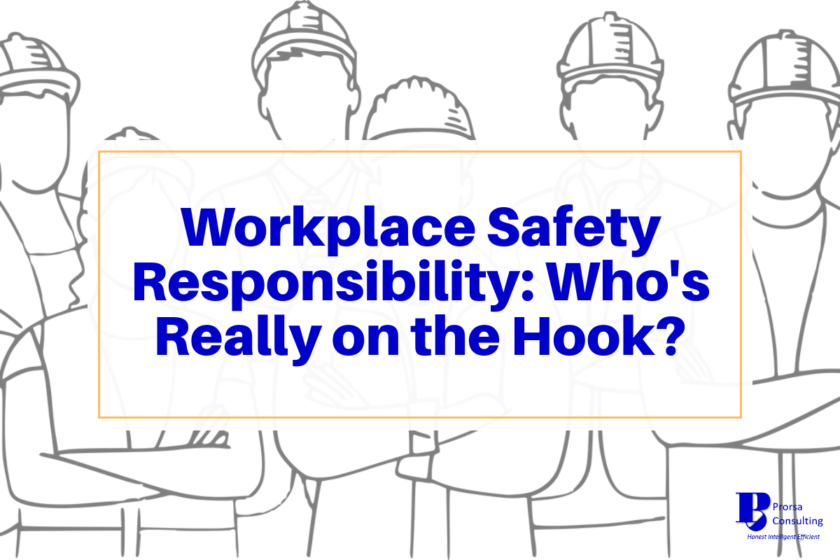
Think defining workplace safety responsibility is straightforward?
If so, you may be surprised that it’s not as simple as you think. Many items and circumstances impact the health and safety of any facility. As such, no one individual can be named as the sole responsible party.
Moreover, safety cultures grow best in an inclusive environment, opposing the view of a single person holding all the responsibility for workplace health and safety. This post will delve into safety responsibility from the statutory, functional, and cultural perspectives. Exploring these differing angles will help increase understanding of everyone’s duties in promoting a harm-free work environment.
Safety Responsibility from a Statutory Standpoint
Organizations have a vested interest in knowing their legal obligations. Ignorance of laws and regulations can leave businesses open to increased agency scrutiny, citations, and even loss of the right to operate in extreme circumstances.
The Occupational Safety and Health (OSH) Act Assigns Duty to Employers
Section 5(a)(1) of the OSH Act, commonly called the General Duty Clause, mandates employers to provide a workplace free of hazards that cause or likely will cause death or serious bodily harm. Furthermore, Section 5(a)(2) of the Act also requires employers to comply with standards promulgated by the Occupational Safety and Health Administration (OSHA).
These obligations require employers to design a safety strategy that identifies and mitigates deadly and serious hazards on an ongoing basis. Title 29 Code of Federal Regulations (CFR) Part 1910 outlines numerous health and safety standards for general industry. As such, employers with activities or equipment covered within these regulations are mandated to meet the stated requirements.
Employees Are Also Charged With Safety Responsibility Under the OSH Act
The OSH Act Section 5(b) covers worker duties concerning health and safety. Employees must follow all applicable occupational health and safety orders, rules, regulations, and standards relating to their own conduct.
Moreover, the safety and health rights of workers are also defined within the Act. Employees have the right to work in a safe, healthy environment, see information regarding health and safety, access personal protective equipment (PPE) free of charge, file an OSHA complaint, and exercise their rights without fear of reprisal, among others.
Employers must respect the health and safety rights of workers. Likewise, employees should understand their rights and duties and the obligations of employers regarding health and safety. By ensuring all parties are thoroughly informed on their statutory safety responsibility, the entire workforce will be better protected.
The Functional Perspective on Safety Responsibility
As we saw in the General Duty Clause, employers have the primary duty of providing a safe and healthy workplace. But who holds explicit safety responsibility within the organization?
The Obligation to Fulfill Workplace Health and Safety Mandates Ultimately Rests with Top Leadership
Business owners, executives, and top site officials typically act as the responsible officials of the employer, i.e., the business, in most aspects of their job duties. Workplace health and safety matters are no different. Furthermore, a compelling argument exists for why these individuals should be held accountable functionally.
Top leadership establishes the organization’s vision, core values, and governing policies. Additionally, senior officials serve as the final decision-makers on the resources that can make or break a safety program. These individuals set the safety tone for the entire organization, and their overall influence cannot be overstated.
Health and Safety Officers and Front Line Supervisors Help Top Leaders Fulfill Their Safety Responsibility
Safety responsibility is not an item that responsible officials can truly delegate. Some may try and fail to place health and safety professionals and supervisors on the hook. Yet, Safety leaders at lower levels in the organization should be viewed as day-to-day program managers possessing the expertise and know-how necessary to execute the company’s strategy excellently.
Health and safety personnel and those with supervisory duties are, in essence, the coaches of the business when it comes to safety matters. They act to provide guidance and accountability, working alongside top leadership and employees to enhance workplace health and safety performance.
Yes, these individuals will have safety responsibilities assigned as part of their job descriptions. Nevertheless, health and safety officers and supervisors often lack the authority to act as the employer’s agent, even in workplace health and safety matters, because their actions are governed by the vision, policies, and organizational structure approved by top leadership.
Safety Responsibility: The Cultural Answer
By default, every person employed by an organization becomes part of the employer’s safety team. Workplace health and safety program success depends on each individual’s actions and the group’s collective effort. Through this cultural lens, we find the most accurate answer to who holds safety responsibility within an organization.
Culturally, Every Person Owns Safety
In the team dynamic present in most businesses, each individual has their own duties to fulfill. Remember, the statutory language following the General Duty Clause explicitly assigns safety responsibility to individual workers, primarily to engage in safe work.
Leaving oneself at heightened risk of injury or death only makes it harder to meet the demands of the job. Absences and restricted work negatively impact productivity, ultimately influencing employees’ paychecks, benefit levels, and perceived job stability.
Moreover, workers generally expect to leave work and return home to their families at the end of each workday. They also desire the time spent with loved ones to be enjoyable and meaningful. Failing to recognize the personal component of safety devalues the importance one holds in the lives of one’s family and friends.
The Collective Workforce Also Has a Safety Responsibility
Each employee within a company can be viewed as a link in the safety chain. The chain weakens as the links deteriorate. Adversely, the chain grows stronger as the links become more robust. Thus, all workers collectively have a vested interest in workplace health and safety beyond their own actions because the collective performance impacts them personally.
One line worker can create an unsafe working condition for all others in the work area. One severe injury may result in many hours of additional work for the health and safety officer and the affected supervisor. Likewise, one major control failure may cost the company a pile of cash and result in tough questions from OSHA to the company’s top leadership.
In the workplace, every person is a safety champion. Each worker holds themselves accountable for safety and serves as an example to others in the workforce. Additionally, the collective efforts of employees fulfill the employer’s safety responsibility through actions such as reporting, correcting deficiencies, engaging in safety program/policy development, allocating resources, training, coaching, making safety observations, etc. The entire workforce is in the same boat; all the individuals rise or sink together.
Additional Safety Responsibility Articles for You
Robust Personal Risk Assessment in 4 Powerful Acts
Top Management Commitment in EHS: The Surprise Defense to a Deficient Culture
Worker Participation in Safety Management: Strategies to Boost Engagement
Final Thoughts
Safety responsibility is no one person’s duty. It is a group effort harmoniously encompassing both individual and team obligations, leading to increased worker protection and reduced risk. Depending on the perspective, differing persons may have mandates to meet when workplace health and safety is viewed statutorily, functionally, and culturally.
However, there is no escape from the fact that everyone has a role to play concerning workplace safety. That responsibility shadows every person regardless of title, authority, or experience.
Please share or comment to help us assist others!
You can also follow Prorsa Consulting on LinkedIn, Pinterest, Twitter, and Facebook.
Empower your business with our suite of EHS digital downloads. Visit Prorsa’s online store today to discover how we can help you elevate your EHS program.

